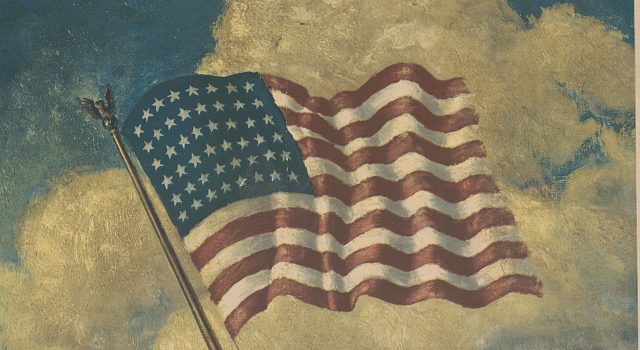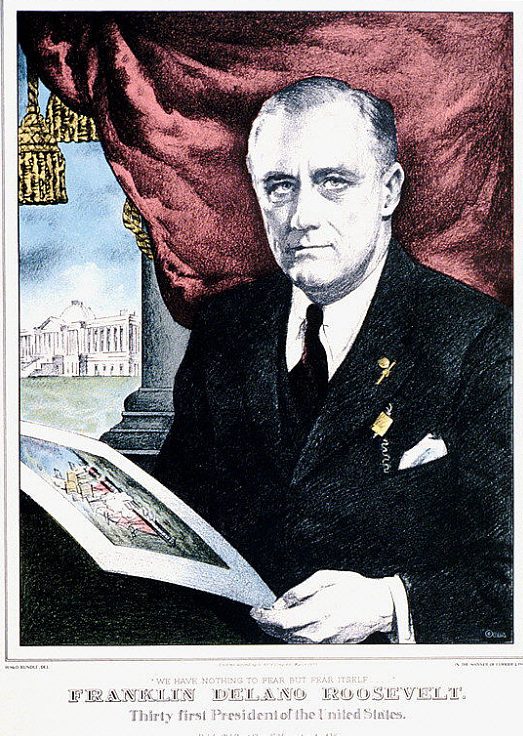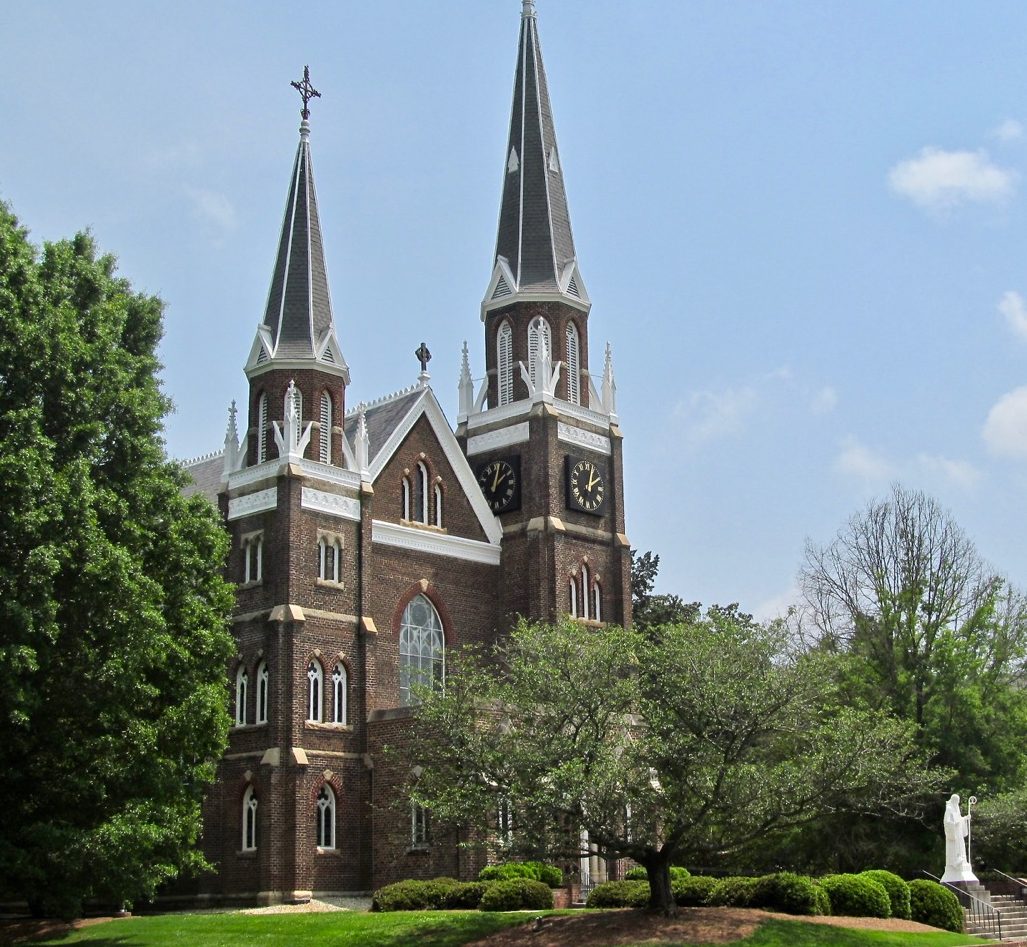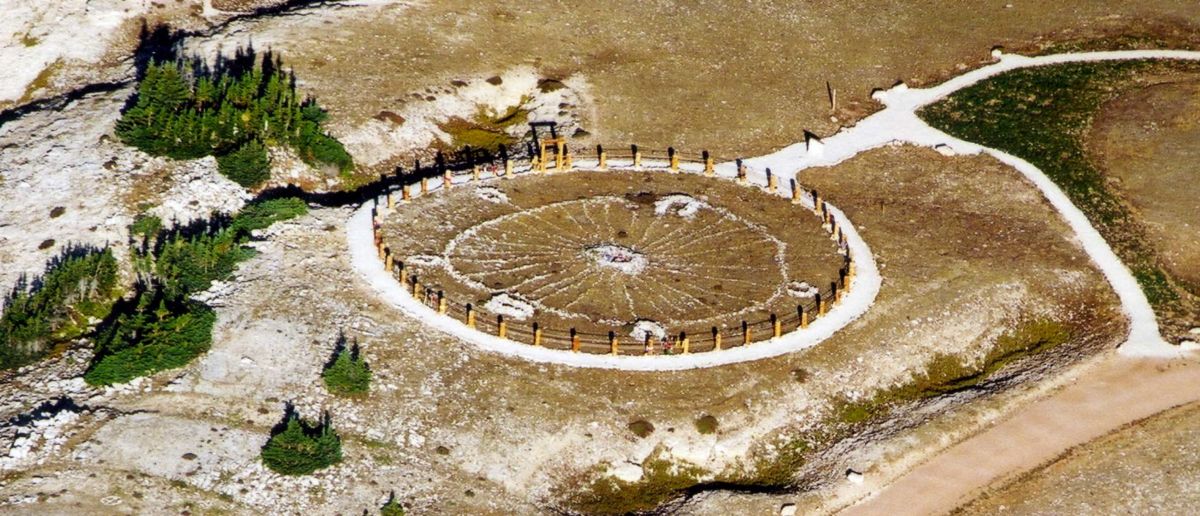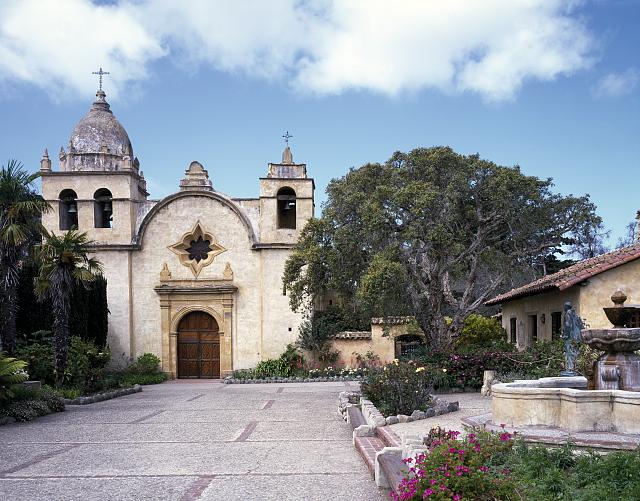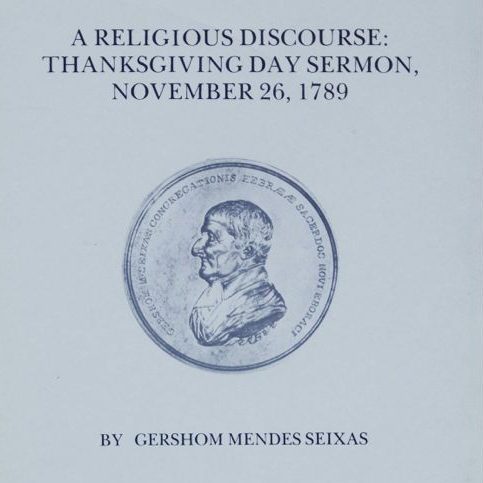Belmont Abbey, Part Two: A Catholic Response to Post-Reconstruction Southern Culture
Abbot Leo Haid
1876 to present
The monks who founded Belmont Abbey in Belmont, North Carolina built their monastery on former plantation land. Finding there a massive stone that had once been used as a slave auction block, they transformed its purpose. The story illustrates one of several challenges the Catholic Church confronted as it sought to build an institutional presence in the American South.
The story of the Abbey Basilica of Maryhelp in Belmont, North Carolina touches on two problems the Catholic Church confronted as it sought to build an institutional presence in the American South. The first was whether to criticize or accommodate slavery and the post-Civil War discrimination against African Americans.
Popes in the late 18th and the first half of the 19th century had spoken against the slave trade and slavery. Popes later in the century were less critical of the institution, although concerned about the treatment of slaves. While the argument over slavery caused rifts between Southern and Northern branches of Protestant denominations as the Civil War approached, the American Catholic hierarchy for the most part avoided the quarrel. One motive was the importance of maintaining unity in the Church. As the story of Belmont Abbey indicates, dealing with slavery and its aftermath was largely left up to individual Catholics and their local institutions.
Transforming the Meaning of a Stone

The baptismal font in the narthex of the Abbey Basilica of Maryhelp in Belmont, North Carolina. Photo by Ellen Tucker.
Belmont Abbey was built on farm property bought from the Caldwell family. The German Benedictine monk, Herman Wolfe, who as Prior first took over management of the Caldwell Farm, named it “Marienstein” after a large granite boulder on the property. Legend said the indigenous Catawba people had used it as an altar; the Caldwells, acquiring the land for a plantation shortly after the American Revolution, had used the stone as a slave auction block. Wolfe saw the granite as the cornerstone of the new, religious plantation that would receive the divine assistance of the Virgin Mary. A first brick college building was constructed next to the massive stone, and when newly appointed Abbot Leo Haid arrived in 1884, finding little more than this poorly constructed building on a dilapidated, struggling farm, he stood before the stone to deliver his first words of blessing and exhortation to the priests he had recruited to join him in the mission.

The bronze plaque mounted on the baptismal font summarizes its history and transformed purpose. Photo by Ellen Tucker.
Haid’s group of monks seemed to connect the history of the stone to the debt they owed to black labor. They hired black sharecroppers and laborers to run the farm, make the bricks for their building work, and do the necessary carpentry. Haid enjoyed some of his earliest missionary success among these laborers, and built a chapel for them on the Abbey property. Local folklore tells of the German monks hearing the wails of departed slaves emanating from the stone, and kneeling at it to pray for their souls. This practice caused the local Baptists—to whom the dress, worship practices, and foreign accents of the mostly German monks were altogether foreign—to start a rumor that the monks were slave worshippers. Hence, after Haid began building more permanent structures, he had the controversial stone partially buried. But when the Abbey Basilica renovation was completed in 1965 (at a time when Abbey leaders were working with other local Protestant and business leaders to peacefully accomplish business and school integration in Belmont), the monks excavated the now completely buried stone, carved a basin in it, and placed it in the narthex as a baptismal font. A brass plate on the stone describes its transformation from a rock upon which “men were once sold into slavery” to one upon which, “through the waters of Baptism, men become free children of God.”
Navigating Relations with a Majority Protestant Culture
A second problem illuminated by the story of Belmont Abbey and the Abbey Basilica of Maryhelp was that of “Americanism”—how to accommodate or build amicable relations with a traditionally Protestant culture.

Cardinal James Gibbons, Library of Congress Prints and Photographs Division, LC-DIG-hec-16054.
To ease tensions between Catholics and others and smooth the progress of the Church in America, some Catholics, most notably perhaps Bishop John Ireland (1838-1918), sought ways to accommodate Catholic doctrine to American realities and to modern life more generally. Pope Leo XIII, in his encyclical or letter Testem Benevolentiae Nostrae (1899), criticized any such efforts that compromised Church doctrine (which by then would include approving of labor unions, for example). The letter was written to Cardinal Gibbons, as he had by then become the recognized head of the Church in America. Gibbons had found ways to talk to Protestant Americans about Church doctrine without sacrificing anything essential. In his response to the Pope’s letter, Gibbons assured the Pope that this was true of the Church in America as a whole. Ireland never claimed anything different, although he remained committed to what he thought of as a modern approach.
Abbot Leo Haid Changes the Name of a Southern Town
In Belmont, Abbot Haid gradually mastered the political art of accommodating Protestant American culture while defending Catholic doctrine. An early test of Haid’s political skill involved the name of the town itself. When the Benedictines arrived in Gaston County, the town was a tiny settlement around a station on the railroad named Garibaldi. Although the name derived from the first stationmaster at the stop, to the monks it recalled the anti-papal Italian revolutionary, Giuseppi Garibaldi. To discourage this association, Haid typically changed the spelling of the town’s name to “Garabaldi” in the headings of letters he wrote. But in 1886, Haid moved to rename the growing settlement near the train stop and the Abbey. He persuaded a group of local business leaders to adopt the name “Belmont,” and this name was recorded in the city incorporation papers of 1895. In later years he would allow a wealthy Northern Protestant Democratic politician, son of financier Auguste Belmont, to flatter himself that he was the Abbey’s namesake, and Belmont Abbey College would receive from Pierre Belmont the bequest of his library.
The tension between tradition and modernism in the Catholic Church at this time was a version of the Fundamentalist/Modernist split in Protestantism. These tensions in Christianity showed the powerful effect America had on religion, just as religion continued to shape American life.
Citation
Paschal Baumstein, My Lord of Belmont: a Biography of Leo Haid (Archives of Belmont Abbey, 1985)
Eric Wildstein, “He Helped Turn Curses to Blessings,” Gaston Gazette, October 3, 2015.
James M. Woods, A History of the Catholic Church in the American South (University Press of Florida, 2011).
